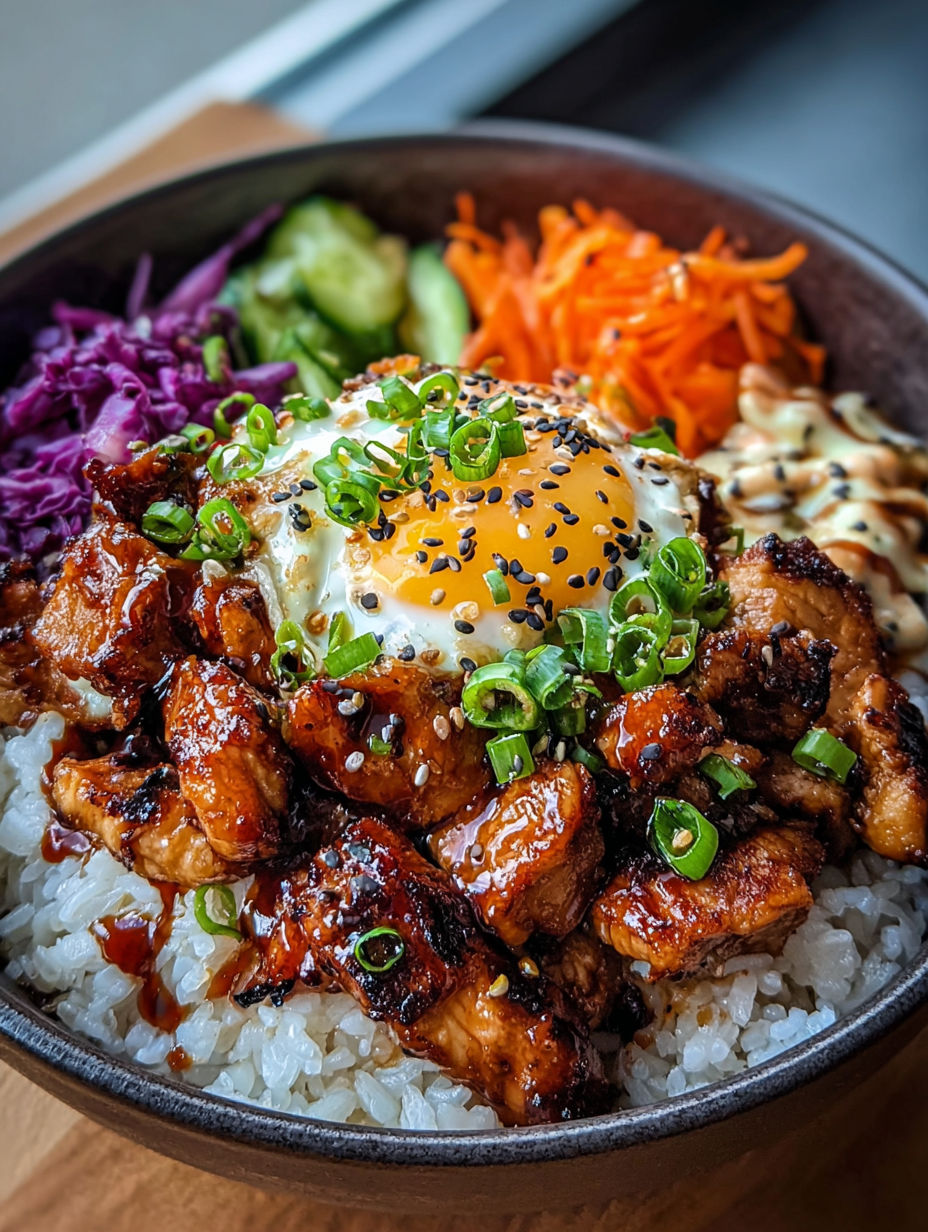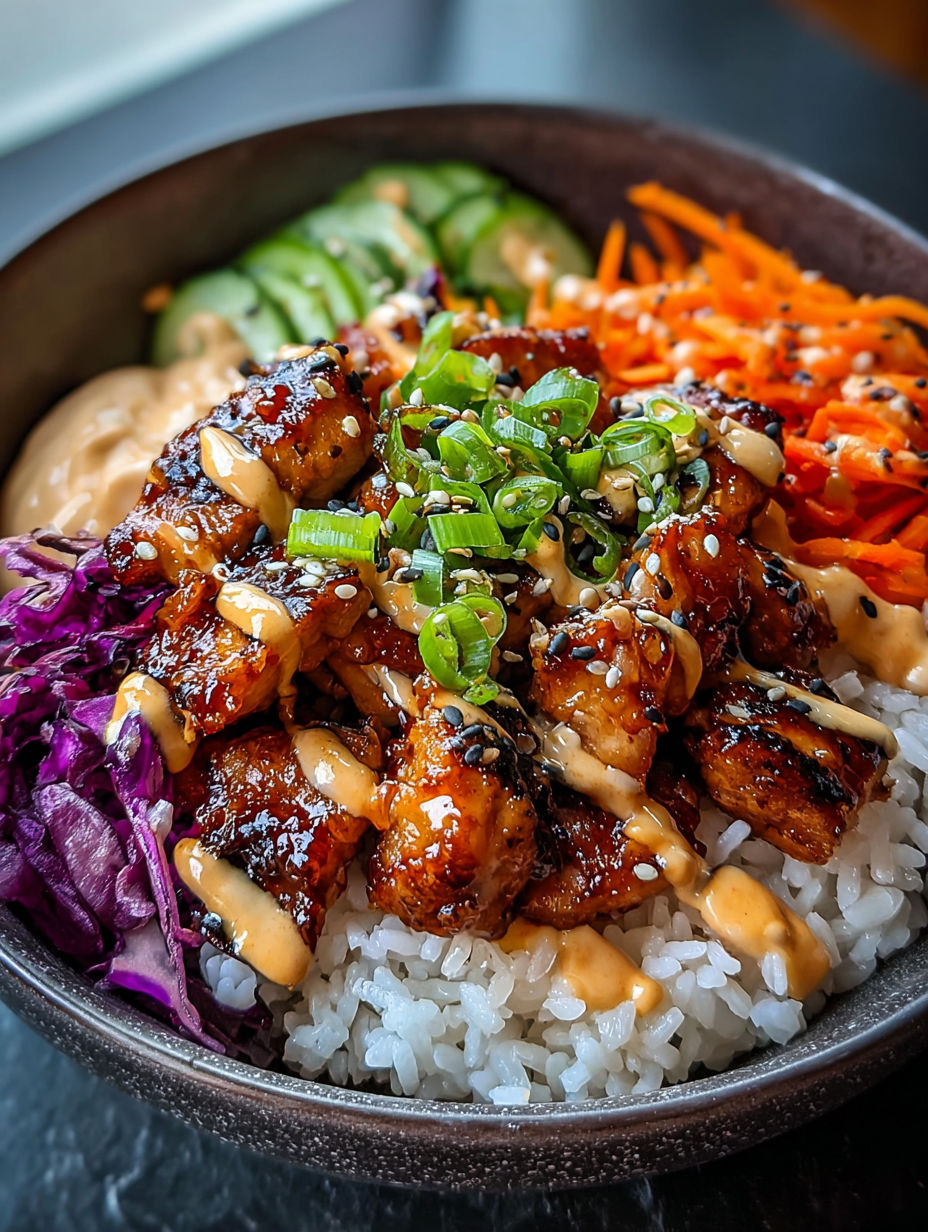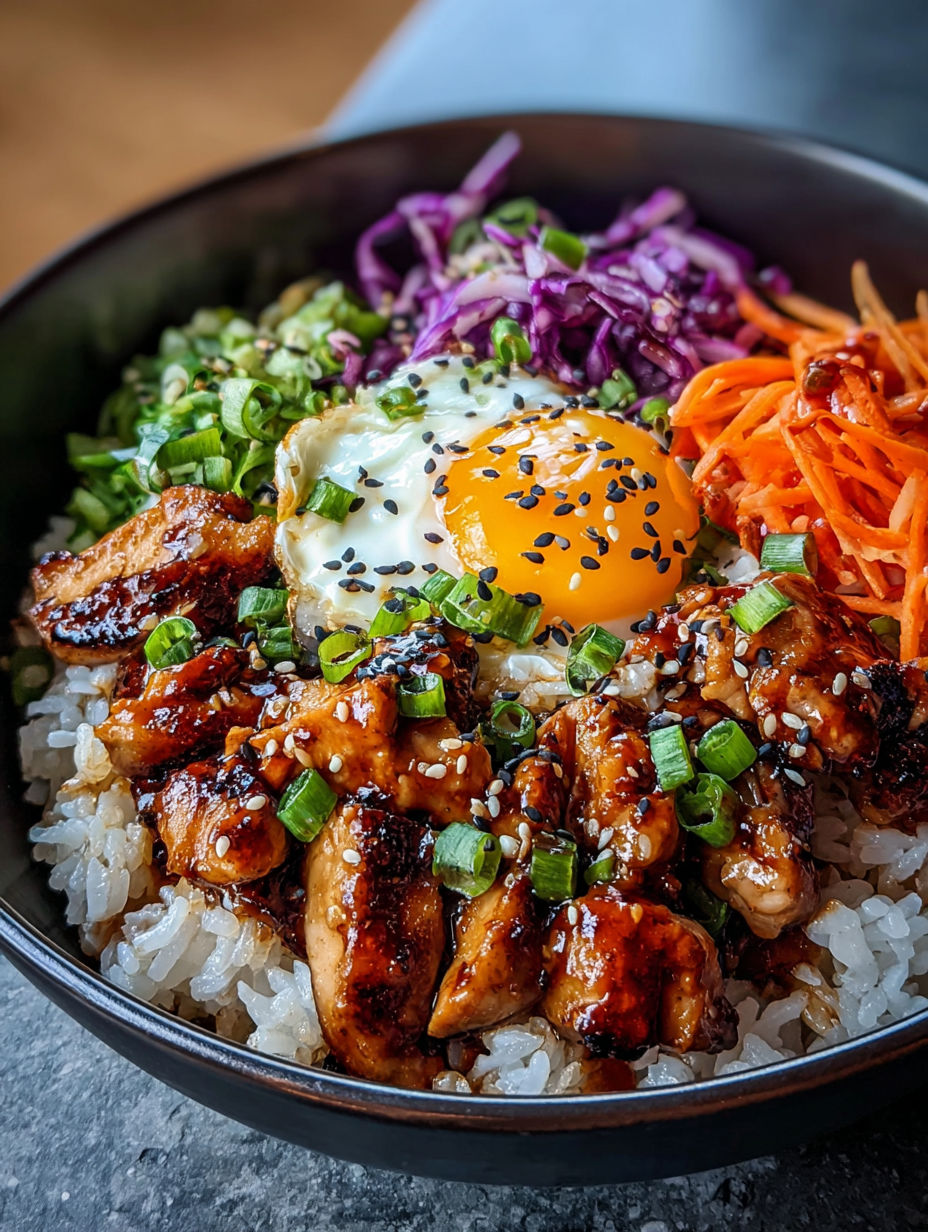 Save
Save
These Korean BBQ chicken bowls with a creamy gochujang sauce have become a staple when I want a quick dinner that feels special without much fuss. The balance of spicy, sweet, and savory makes each bite satisfying and comforting, perfect for weeknight meals or casual get-togethers.
I first tried this recipe when craving Korean flavors but without all the complicated preparation. It quickly became a favorite for our family dinners because it satisfies that craving but comes together so easily.
Ingredients
- Cooked rice: is the base providing a neutral and filling backdrop. Use freshly cooked or leftover rice depending on time.
- Chicken breast: offers lean protein that absorbs the marinade well for juicy bites. Choose firm pink breasts with no odor for the best quality.
- Soy sauce: is the salty backbone of the marinade giving umami depth. Opt for low sodium to control saltiness.
- Sesame oil: has a nutty flavor that is essential in Korean cooking. Use toasted sesame oil for the most aroma.
- Gochujang: is a Korean chili paste bringing heat and a hint of sweetness. Look for paste that is fresh and stored away from light.
- Heavy cream: smooths out the sauce adding richness that contrasts the spicy gochujang. Ensure it is fresh and cold for better texture.
- Honey: adds a touch of sweetness balancing spice and tang. Use a mild floral honey for the best flavor harmony.
- Mixed vegetables: contribute crunch, color, and nutrition. Fresh, crisp vegetables like bell peppers and broccoli work best.
- Green onions: add a fresh bite and garnish that lifts the dish visually and in flavor.
- Sesame seeds: finish the dish with a subtle crunch and toasty flavor. Toast them lightly before using to enhance taste.
Instructions
- Build The Marinade:
- In a bowl, combine the sliced chicken breast with soy sauce and sesame oil. Allow the chicken to sit and soak up the flavors for at least 30 minutes. This tenderizes and infuses every bite.
- Cook The Chicken:
- Heat a pan over medium flame and add the marinated chicken slices. Cook until the chicken is browned and fully cooked through which should take about 6 to 8 minutes. Avoid overcrowding the pan so the chicken browns nicely.
- Mix The Gochujang Cream Sauce:
- In a separate bowl, whisk together gochujang, heavy cream, and honey until smooth and creamy. Adjust the gochujang amount if you prefer mild or more heat. The combination balances spice, sweetness, and richness.
- Stir Fry The Vegetables:
- Add mixed vegetables to the pan used for chicken or a clean pan on medium heat. Cook while stirring frequently until the vegetables are tender yet still crisp staying colorful and fresh tasting.
- Assemble The Bowls:
- Divide cooked rice evenly into four bowls. Top equally with cooked chicken and vegetables. Generously drizzle the gochujang cream sauce over each bowl to tie it all together.
- Garnish And Serve:
- Sprinkle chopped green onions and toasted sesame seeds over the bowls. These last touches add layers of flavor and texture that make the dish pop.

Sesame oil is my favorite ingredient here because its nutty aroma instantly transports me back to the Korean restaurants I love. I fondly remember my first time trying Korean BBQ with friends and this recipe brings a similar warmth and satisfaction to home cooking.
Storage Tips
Store leftovers in an airtight container in the refrigerator and consume within three days. The sauce may thicken when chilled and can be loosened with a splash of water or cream when reheating. Avoid mixing the sauce into the rice until serving to prevent sogginess. Keep sauce separate if packing for lunch. Freeze cooked chicken and vegetables separately from rice for up to three months. Thaw overnight in the fridge before reheating gently.
Ingredient Swaps
Swap chicken for firm tofu or tempeh for a vegetarian option. Marinate and cook similarly for great flavor absorption. Use low fat milk or coconut milk instead of heavy cream for a lighter or dairy free version, though texture will vary. Brown rice or cauliflower rice can replace white rice for different nutrition profiles or keto friendly meals.
Serving Ideas
Serve with a small side of kimchi or pickled vegetables for tangy contrast. Add sliced avocado or a fried egg on top for creaminess and extra richness. A quick cucumber salad dressed with rice vinegar and sesame seeds complements the meal perfectly.
Cultural Context
Gochujang is a fermented Korean chili paste that carries a deep umami flavor from its fermentation process. It is a staple in many Korean dishes and represents a balance of spicy, sweet, and savory tastes. Korean BBQ influenced many fusion recipes outside Korea by taking the intense flavors and quick cooking methods and pairing them with Western ingredients like cream or honey. Rice bowls like this are everyday Korean comfort food adapted for busy modern lifestyles.
Seasonal Twists
In warmer months swap in seasonal vegetables like zucchini, snap peas, or baby corn for a fresher bite. In fall or winter add mushrooms or roasted squash to give the bowl earthier notes. Try swapping the honey for a maple syrup or brown sugar variation for a subtle change in sweetness depending on what you have on hand.

This Korean BBQ chicken bowl recipe brings balanced flavors and ease together perfectly, making it a dependable choice for any weeknight meal.
Frequently Asked Recipe Questions
- → How should I marinate the chicken for best flavor?
Marinate the sliced chicken in soy sauce and sesame oil for at least 30 minutes to infuse savory and nutty tones before cooking.
- → Can I use different vegetables in this dish?
Absolutely. Bell peppers, carrots, and broccoli work well, but feel free to add or substitute with your favorite stir-fry vegetables.
- → What is the role of heavy cream in the sauce?
The heavy cream smooths the heat of gochujang, balancing its spiciness with a rich, velvety texture for a creamy sauce.
- → How spicy is the gochujang sauce and can it be adjusted?
Gochujang brings moderate heat and depth. You can adjust the amount used to suit your spice preference from mild to bold.
- → Are there any garnish suggestions to enhance the final dish?
Chopped green onions and a sprinkle of sesame seeds add fresh and nutty notes, plus appealing texture contrast.
